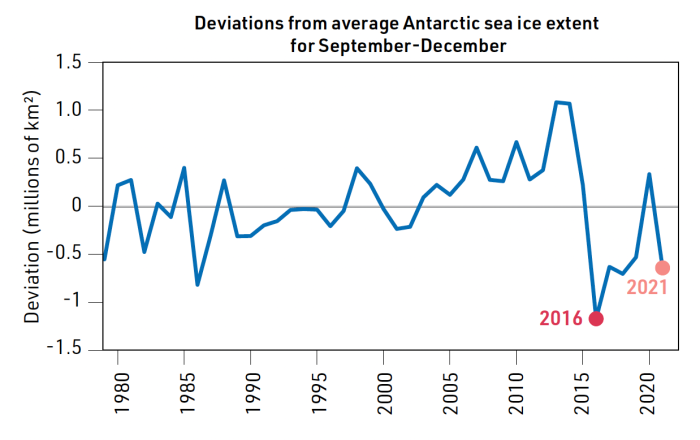
Antarctic sea ice affects global climate by reflecting sunlight, influencing air-sea interactions and ocean circulation.
Sea ice also provides habitat for krill, a keystone species in the Southern Ocean food web.
Despite global warming, Antarctic sea ice coverage increased from 1979 until the mid 2010s.
Then, in 2016, an unprecedented decline in sea ice occurred during spring, leading to sustained record low sea ice coverage.
Since then, sea ice has slowly rebounded, and in mid 2021 was again above average. However, in spring 2021 sea ice once again decreased rapidly, with total coverage at its third-lowest level for spring.
Continued rapid loss has led to record low coverage in late summer 2021-22. The causes of the 2016 and 2021-22 declines are being investigated. Weather patterns over the Southern Ocean were certainly important, with remote influences from the tropics and warmer ocean surface temperatures linked to the 2016 decline possibly also relevant for the 2021-22 decline.
Given the far-reaching implications of Antarctic sea ice on global climate, it is important to understand drivers of these recent extremes and the role that global warming has played.
